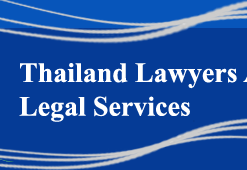



    |
|
| |
|
Open Regionalism and Deeper Integration: The Implementation of ASEAN Investment Area (AIA) and ASEAN Free Trade Area (AFTA)
Part 19
MR is also now encouraged by the WTO agreements i.e. the Technical Barriers to Trade (TBT) agreement and the Sanitary and Phytosanitary Measures (SPS). The TBT refers to mutual recognition both for testing procedures and for substantive product regulations. MFN and NT are both required to be granted to other WTO Members in regard to access to domestic conformity assessment procedures. For instance, if a member state has eliminated the requirements of domestic conformity assessment, this would form the basis for a level of internal treatment that must then be accorded to imported goods on the basis of NT. However, the waiving of internal assessment procedures in favour of another's procedure suggests that whether this can be done depends upon one party's receipt of sufficient assurances as to the quality of the other party's procedures. Thus, on this ground, it appears that mutual recognition may be based on member-by-member agreements or autonomous recognition, and need not be extended automatically to all other members under the MFN clause. WTO agreements ensure only that equal opportunity is granted to all member states to enter into such agreements or arrangements, so as to encourage member states to adopt the mutual recognition. This may lead to standardised national procedural requirements or to the development of further common international standards or minimum standards, which is an alternative to mutual recognition. WTO member countries are pressed to use applicable International Standards where there are such standards available
(128).Under GATS, recognition of educational or other qualifications may be achieved through harmonisation, or may be accorded autonomously or based on agreements or arrangements enter into by Member States, bilaterally, regionally, or plulilaterally. Art. VII encompasses recognition for both conformity-assessment and equivalency aspects (further discussed below). WTO agreements also adopted the origin-designated recognition agreement and recognition of equivalent foreign product regulations, which means Member States may recognise not only their respective capacities to provide for assessment, but further acknowledge the other country's substantive internal requirements to be sufficiently equivalent to permit access without application of the importing country's domestic regulation
(129). Mathis states that the MR agreement negotiated between the EU and the US also accepted this principle."In such a case, an acceptance of the other party's standard has been made, the domestic product regulation has been waived as to those goods, and the non-tariff barriers issue presented by differing standards between countries has been effectively bypassed" (Mathis, 1998: 20).
This recent development clearly shows the positive trend in the adoption of mutual recognition in facilitating free flows of trade and investment at both international and regional level. It also implies that since mutual recognition is becoming accepted, a convergence of internal requirements would develop since regulatory competition would encourage the adoption of prudential and high standards.
Within the EU, mutual recognition has gone further than the WTO agreements, since it covers both equivalent-recognition aspects together with conformity-assessment aspects, a prospect that still does not appear to be entertained by the TBT agreement. John Clarke mentioned the experiences of the EU that:
"In order to permit a genuinely free circulation of goods throughout the European Community, it was necessary for the individual Member States of the Community to reciprocally recognise not only the equivalence of the product standards of other Member States, but also the validity of the tests and certificates of compliance issued by the bodies in those Member States"
(130).This advancement may need a certain level of regulatory development such as in the EU, especially the crucial role of the ECJ in developing the mutual recognition approach, that took 20 years to establish the principle and another 20 years to implement. Now I turn to discuss the MR in the case of ASEAN, as adopted in AFAS (although the level of development is still far behind the EU's).
In order to facilitate liberalisation of services intra-ASEAN, Art. V of AFAS provided that:
"Each Member State may recognise the education or experience obtained, requirements met, or licenses or certifications granted in another Member State, for the purpose of licensing or certification of services suppliers. Such recognition may be based upon an agreement or arrangement with the Member State concerned or may be accorded autonomously".
_______________________________________________________________
(128)Arts. 2 and 4 and also Arts. 5 and 6 of the TBT agreement. Legal text of TBT can be downloaded from WTO website http://www.wto.org/wto/legal/finalact.htm.
(129)Art. 2.7 TBT provided that "Member shall give consideration to accepting as equivalent technical regulations of other Members, even if these regulations differ from their own, provided they are satisfied that these regulations adequately fulfil the objectives of their own regulations".
(130)Clarke, John (1996) "Mutual Recognition Agreements", in International Trade Law and Regulations, Vol. 2, p. 35. Cited in Mathis, op., Cit., p. 21.